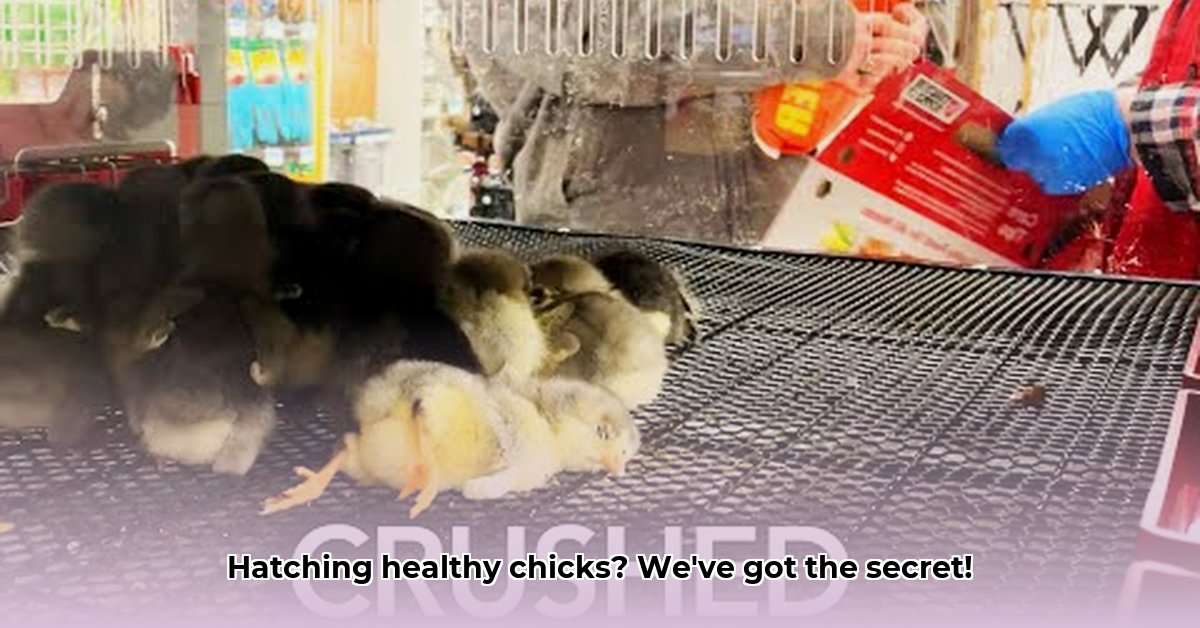
Setting Up Your Chick Brooder: A Step-by-Step Guide
Starting your chick-raising journey can feel daunting, but setting up a comfortable and safe brooder is simpler than you think. This guide will walk you through creating the perfect environment for your new arrivals, focusing on the essential role of a Tractor Supply chick heat plate. Remember, a happy, healthy chick starts with a properly prepared brooder.
For more on suitable housing, check out these Tractor Supply options.
First, you need a suitable brooder (a small enclosure) which could be a sturdy cardboard box, a plastic storage container, or a purpose-built brooder from Tractor Supply. Size matters: choose a container large enough to allow your chicks to move around freely without feeling crowded. Overcrowding leads to stress and increased disease risk.
Next, add bedding—a comfortable and absorbent base for your chicks. Pine shavings are a popular choice, providing a soft surface and helping maintain cleanliness. Aim for a deep layer (a few inches) across the bottom. Avoid cedar shavings, as they can be toxic to chicks.
Now, add food and water. Use feeders and waterers designed for chicks to prevent feed waste and drowning. Clean, fresh water is crucial, so change the water daily.
Finally, the heat plate: Carefully place your Tractor Supply chick heat plate within the brooder, away from food and water sources to prevent accidents. Good ventilation is also important, so ensure some airflow while avoiding drafts.
Maintaining the Perfect Temperature: Your Chick's Comfort Zone
Temperature control is critical for chick survival. Too cold, and they'll huddle together, shivering; too hot, and they'll overheat and become stressed. A reliable thermometer, placed at chick level, is vital. Don't rely on your hand—chicks need a precise temperature.
Here's a step-by-step approach to using your Tractor Supply chick heat plate:
- Placement: Position the heat plate to evenly warm the brooder, keeping it away from food and water.
- Initial Temperature: Begin with a temperature of approximately 95°F (35°C) for the first week. Adjust slightly based on your brooder and room temperature. Using a thermometer accurate to within a degree is recommended.
- Regular Checks: Check the temperature multiple times daily—the optimum temperature may need adjustments.
- Gradual Reduction: Reduce the temperature by roughly 5°F (3°C) per week as your chicks grow and become less dependent on supplemental heat.
- Observe Chick Behavior: Are your chicks spread out comfortably, or are they huddled? Huddling indicates they're cold, while panting suggests overheating. Their behavior is your best guide. Once your chicks are fully feathered (around 6-8 weeks), you can remove the heat plate completely.
Feeding and Watering: Nourishing Your Growing Chicks
High-quality chick starter feed and constant access to clean water are essential. Change water daily to prevent bacterial growth. Maintaining a clean environment is crucial for preventing disease.
Daily Health Checks: Keeping a Watchful Eye
Regular daily health checks are vital. Look for signs of illness such as lethargy, ruffled feathers, or difficulty breathing. Early detection is crucial. If you spot anything unusual contact a veterinarian experienced in poultry care. Prevention is always better than cure!
Choosing the Right Bedding: A Detailed Comparison
Choosing the right bedding for your chicks is important. Different materials offer various benefits and drawbacks. Consider these factors when making your decision:
| Bedding Material | Pros | Cons |
|---|---|---|
| Shredded Paper | Absorbent, dust-free, comfortable. | Can become damp, relatively expensive. |
| Pine Shavings | Absorbent, generally readily available. | Can be dusty (choose low-dust varieties). |
| Aspen Shavings | Soft, absorbent, relatively dust-free | More expensive than some alternatives, can become moldy if damp. |
| Hemp Bedding | Compostable, absorbent, relatively dust-free | More expensive than other options. |
| Chopped Straw | Inexpensive, readily available, compostable | Dusty, can harbor pests, less absorbent. |
Remember to always prioritize your chicks' comfort and health. Observe their behavior and adjust your approach as needed. Happy chick-raising!